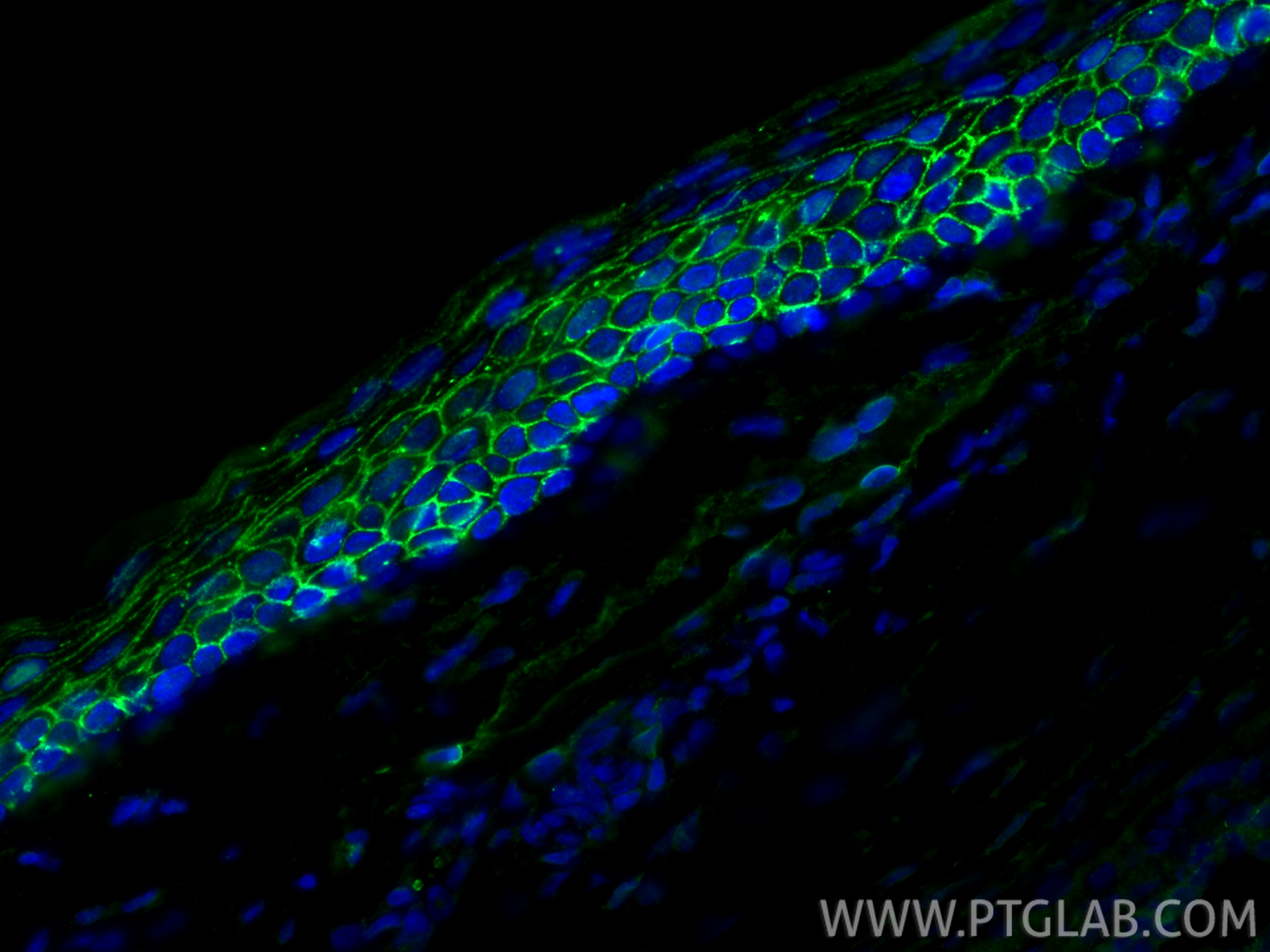验证数据展示
经过测试的应用
| Positive IF-P detected in | rat eye tissue |
| Positive FC (Intra) detected in | U251 |
推荐稀释比
| 应用 | 推荐稀释比 |
|---|---|
| Immunofluorescence (IF)-P | IF-P : 1:50-1:500 |
| Flow Cytometry (FC) (INTRA) | FC (INTRA) : 0.20 ug per 10^6 cells in a 100 µl suspension |
| It is recommended that this reagent should be titrated in each testing system to obtain optimal results. | |
| Sample-dependent, Check data in validation data gallery. | |
产品信息
83272-1-RR targets KERA in IF-P, FC (Intra), ELISA applications and shows reactivity with human samples.
| 经测试应用 | IF-P, FC (Intra), ELISA Application Description |
| 经测试反应性 | human |
| 免疫原 |
CatNo: Ag34171 Product name: Recombinant human KERA protein Source: e coli.-derived, PGEX-4T Tag: GST Domain: 210-320 aa of BC032667 Sequence: RLPANTMQLFLDNNSIEGIPENYFNVIPKVAFLRLNHNKLSDEGLPSRGFDVSSILDLQLSHNQLTKVPRISAHLQHLHLDHNKIKSVNVSVICPSPSMLPAERDSFSYGP 种属同源性预测 |
| 宿主/亚型 | Rabbit / IgG |
| 抗体类别 | Recombinant |
| 产品类型 | Antibody |
| 全称 | keratocan |
| 别名 | Keratocan, 230399B11, CNA2, KTN, SLRR2B |
| 计算分子量 | 352 aa, 41 kDa |
| GenBank蛋白编号 | BC032667 |
| 基因名称 | KERA |
| Gene ID (NCBI) | 11081 |
| RRID | AB_3670944 |
| 偶联类型 | Unconjugated |
| 形式 | Liquid |
| 纯化方式 | Protein A purfication |
| UNIPROT ID | O60938 |
| 储存缓冲液 | PBS with 0.02% sodium azide and 50% glycerol, pH 7.3. |
| 储存条件 | Store at -20°C. Stable for one year after shipment. Aliquoting is unnecessary for -20oC storage. |
背景介绍
Keratocan and Lumican are the predominant class II SLRPs(Small leucine-rich proteoglycans) in the corneal stroma. While not totally corneal-specific together these SLRPs are excellent biomarkers for the tissue. Mutant mice deficient for keratocan expression have transparent but thin corneal stromas with a mild increase in collagen fibril diameter with no further abnormalities.In humans, mutations in the keratocan gene are associated with a flattened cornea in a rare condition known as cornea plana. The relative specificity of keratocan to corneal keratocytes has been useful for tissue-specific targeting for genetic manipulation of the corneal stroma.(PMID: 32663498)
实验方案
| Product Specific Protocols | |
|---|---|
| FC protocol for KERA antibody 83272-1-RR | Download protocol |
| Standard Protocols | |
|---|---|
| Click here to view our Standard Protocols |




